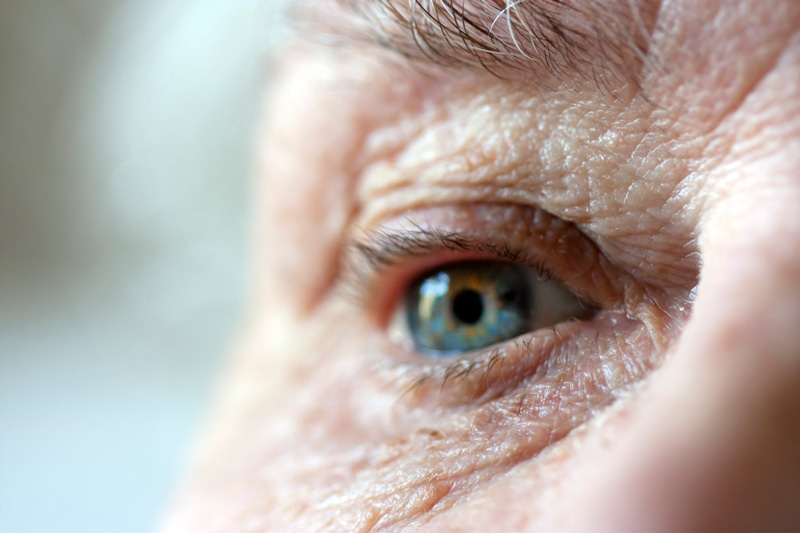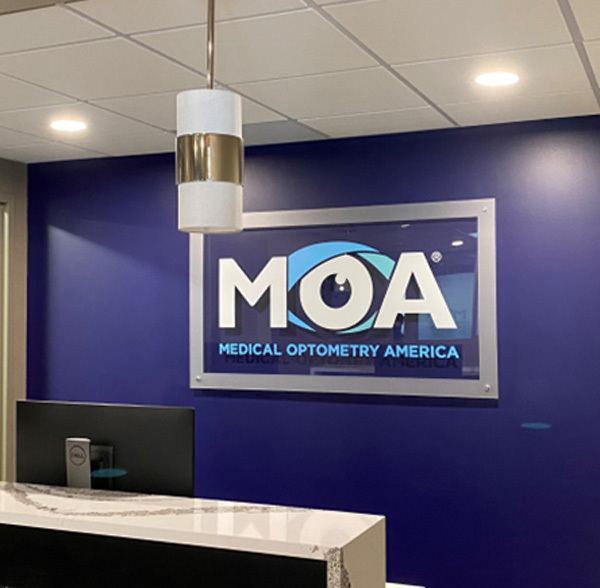Age-Related Macular Degeneration
Protect Your Central Vision
Your content goes here. Edit or remove this text inline or in the module Content settings. You can also style every aspect of this content in the module Design settings and even apply custom CSS to this text in the module Advanced settings.
Like many eye diseases, age-related macular degeneration (also known as AMD) usually develops without noticeable symptoms. AMD causes loss of central vision, which is the portion of your sight that allows you to study fine details, read words and numbers, and recognize faces. However, this disease may be managed effectively if detected early.
Over time, vision loss from AMD can become so severe that it creates dark spots in the middle of your vision. This vision loss is permanent, and managing the disease or mitigating its effects depends heavily on early diagnosis.
AMD does not have to mean blindness for you. By taking a proactive approach to your eye health, you can help slow AMD’s progress and prevent further damage.
Types of AMD: Dry
Dry AMD is the more common of the two and tends to be less severe. In cases of dry AMD, fatty deposits called drusen start to collect around the macula (the small portion of the retina responsible for central vision). As these deposits accumulate, the macular cells sustain damage and begin to die, limiting the macula’s ability to detect light.



Types of AMD: Wet
Wet AMD is more advanced and can develop when dry AMD goes untreated. In cases of wet AMD, the delicate blood vessels within the retina become damaged over time.
These damaged blood vessels leak fluid into the macula. The body grows new blood vessels to replace them, but the new ones are irregular and weak, causing additional leakage and obstructing central vision. The leakage can also result in scar tissue if left untreated.
“Patients can take a proactive stance against age-related macular degeneration, giving them a better chance of enjoying clear and complete vision, even in their later years. The single greatest thing you could do for your vision is to see your optometrist annually for testing. By the time patients have begun to experience symptoms, irreversible vision loss has already occurred. As such, early detection is crucial.”
The Main Causes of AMD
Age
As the name suggests, AMD is more common in the aging population. For the most part, adults under the age of 50 are unlikely to develop AMD. The older you get, the higher your risk for developing age-related macular degeneration becomes, making annual eye exams even more important.
Biology & Family History
Age-related macular degeneration is heavily tied to genetics. A family history of AMD puts you at a higher risk of developing it yourself. Some ethnic groups also seem to be more vulnerable than others. For example, Caucasian people seem more likely to develop this disease than people from other ethnic groups.
Lifestyle
Certain lifestyle factors may increase your risk of developing age-related macular degeneration. For example, patients who smoke cigarettes or struggle with obesity seem to be more vulnerable to the disease. Even seemingly harmless elements such as ultraviolet light from long-term sun exposure could increase your chances of developing AMD.
Symptoms of AMD
For the most part, AMD does not present noticeable symptoms until its advanced stages. However, patients suffering from age-related macular degeneration may notice some indicators, including:
- Blurry vision
- Lines that should be straight appearing wavy
- Sensitivity to glare
- Difficulty reading, particularly in low light
- Loss of central vision


Medical Optometry America Best Practice Treatments
Medical Optometry America practices use the following tools and technology to diagnose and manage cases of macular degeneration:
- OCT (Retina Scan): This non-invasive imaging test allows practitioners to see each of the retina’s distinct layers. OCT scans provide treatment guidance for AMD and other retinal diseases.
- Fundus Photography: This diagnostic approach uses a retinal camera to photograph different parts of the eye. Fundus Photography is an essential part of screening for AMD, along with numerous other conditions and diseases.
- Nutritional Therapy: Medical Optometry America offices carry the #1 nutritional products on the market (nūmaqula and nūretin by PRN) to support retina health.

Learn More About Eyecare at MOA? Read Our Blogs!
Discover a wealth of valuable information on eye care, including insights on age-related macular degeneration (AMD), by visiting MOA Eye’s blog. Our collection of expertly crafted blogs covers a range of essential topics to help you maintain optimal eye health and stay informed about the latest advancements in treatment and prevention strategies. Start your journey toward better vision by exploring our comprehensive blog library today!
